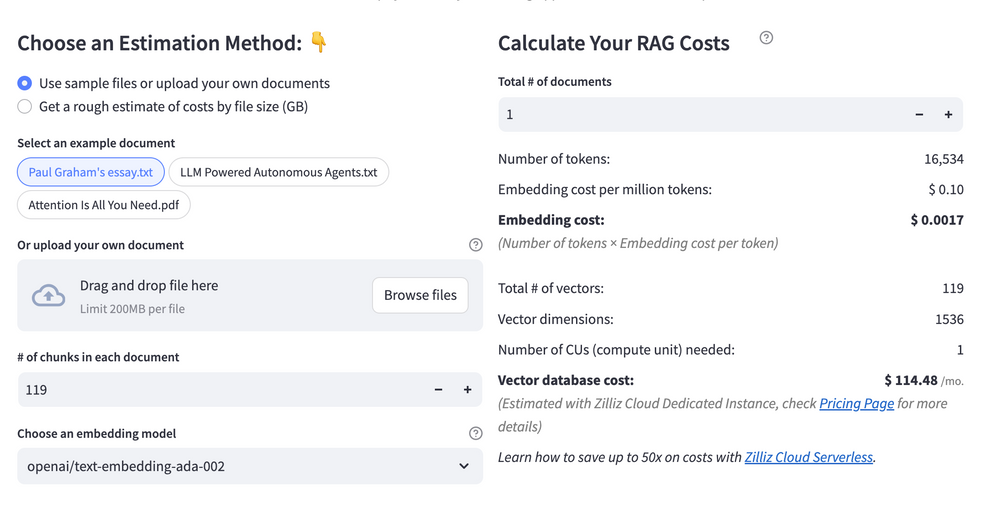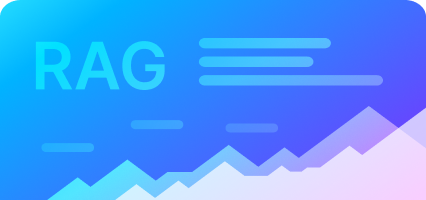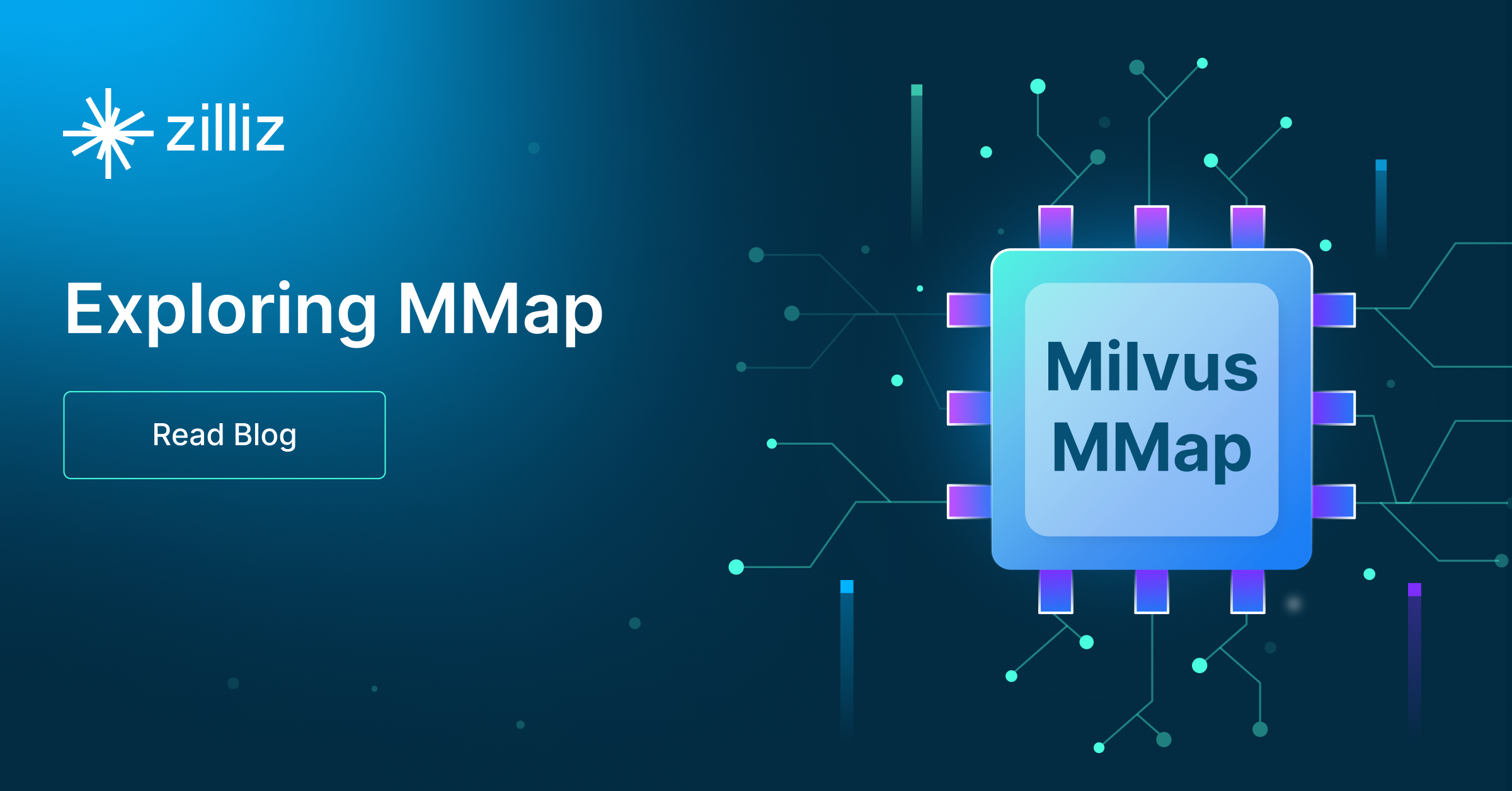Build RAG Chatbot with Haystack, Milvus, Mistral 7B, and Ollama nomic-embed-text
Introduction to RAG
Retrieval-Augmented Generation (RAG) is a game-changer for GenAI applications, especially in conversational AI. It combines the power of pre-trained large language models (LLMs) like OpenAI’s GPT with external knowledge sources stored in vector databases such as Milvus and Zilliz Cloud, allowing for more accurate, contextually relevant, and up-to-date response generation. A RAG pipeline usually consists of four basic components: a vector database, an embedding model, an LLM, and a framework.
Key Components We'll Use for This RAG Chatbot
This tutorial shows you how to build a simple RAG chatbot in Python using the following components:
- Haystack: An open-source Python framework designed for building production-ready NLP applications, particularly question answering and semantic search systems. Haystack excels at retrieving information from large document collections through its modular architecture that combines retrieval and reader components. Ideal for developers creating search applications, chatbots, and knowledge management systems that require efficient document processing and accurate information extraction from unstructured text.
- Milvus: An open-source vector database optimized to store, index, and search large-scale vector embeddings efficiently, perfect for use cases like RAG, semantic search, and recommender systems. If you hate to manage your own infrastructure, we recommend using Zilliz Cloud, which is a fully managed vector database service built on Milvus and offers a free tier supporting up to 1 million vectors.
- Mistral 7B: A 7-billion parameter open-source language model optimized for efficiency and versatility in natural language processing. It excels in text generation, summarization, and question answering, balancing performance with lower computational demands. Ideal for chatbots, content creation, code generation, and real-time applications where resource efficiency and rapid deployment are critical.
- Ollama nomic-embed-text: A versatile text embedding model optimized for efficient generation of high-dimensional vector representations, excelling in semantic search, clustering, and similarity analysis. Strengths include robust performance on long-context inputs and scalability for local deployment. Ideal for applications requiring accurate document retrieval, recommendation systems, or contextual understanding in resource-constrained environments.
By the end of this tutorial, you’ll have a functional chatbot capable of answering questions based on a custom knowledge base.
Note: Since we may use proprietary models in our tutorials, make sure you have the required API key beforehand.
Step 1: Install and Set Up Haystack
import os
import requests
from haystack import Pipeline
from haystack.components.converters import MarkdownToDocument
from haystack.components.preprocessors import DocumentSplitter
from haystack.components.writers import DocumentWriter
Step 2: Install and Set Up Mistral 7B
To use Mistral models, you need first to get a Mistral API key. You can write this key in:
- The
api_keyinit parameter using Secret API - The
MISTRAL_API_KEYenvironment variable (recommended)
Now, after you get the API key, let's install the Install the mistral-haystack package.
pip install mistral-haystack
from haystack_integrations.components.generators.mistral import MistralChatGenerator
from haystack.components.generators.utils import print_streaming_chunk
from haystack.dataclasses import ChatMessage
from haystack.utils import Secret
generator = MistralChatGenerator(api_key=Secret.from_env_var("MISTRAL_API_KEY"), streaming_callback=print_streaming_chunk, model='open-mistral-7b')
Step 3: Install and Set Up Ollama nomic-embed-text
pip install ollama-haystack
Make sure that you have a running Ollama model (either through a docker container, or locally hosted). No other configuration is necessary as Ollama has the embedding API built in.
from haystack import Document
from haystack_integrations.components.embedders.ollama import OllamaDocumentEmbedder
from haystack_integrations.components.embedders.ollama import OllamaTextEmbedder
text_embedder = OllamaTextEmbedder(model="nomic-embed-text")
document_embedder = OllamaDocumentEmbedder(model="nomic-embed-text")
Step 4: Install and Set Up Milvus
pip install --upgrade pymilvus milvus-haystack
from milvus_haystack import MilvusDocumentStore
from milvus_haystack.milvus_embedding_retriever import MilvusEmbeddingRetriever
document_store = MilvusDocumentStore(connection_args={"uri": "./milvus.db"}, drop_old=True,)
retriever = MilvusEmbeddingRetriever(document_store=document_store, top_k=3)
Step 5: Build a RAG Chatbot
Now that you’ve set up all components, let’s start to build a simple chatbot. We’ll use the Milvus introduction doc as a private knowledge base. You can replace it your own dataset to customize your RAG chatbot.
url = 'https://raw.githubusercontent.com/milvus-io/milvus-docs/refs/heads/v2.5.x/site/en/about/overview.md'
example_file = 'example_file.md'
response = requests.get(url)
with open(example_file, 'wb') as f:
f.write(response.content)
file_paths = [example_file] # You can replace it with your own file paths.
indexing_pipeline = Pipeline()
indexing_pipeline.add_component("converter", MarkdownToDocument())
indexing_pipeline.add_component("splitter", DocumentSplitter(split_by="sentence", split_length=2))
indexing_pipeline.add_component("embedder", document_embedder)
indexing_pipeline.add_component("writer", DocumentWriter(document_store))
indexing_pipeline.connect("converter", "splitter")
indexing_pipeline.connect("splitter", "embedder")
indexing_pipeline.connect("embedder", "writer")
indexing_pipeline.run({"converter": {"sources": file_paths}})
# print("Number of documents:", document_store.count_documents())
question = "What is Milvus?" # You can replace it with your own question.
retrieval_pipeline = Pipeline()
retrieval_pipeline.add_component("embedder", text_embedder)
retrieval_pipeline.add_component("retriever", retriever)
retrieval_pipeline.connect("embedder", "retriever")
retrieval_results = retrieval_pipeline.run({"embedder": {"text": question}})
# for doc in retrieval_results["retriever"]["documents"]:
# print(doc.content)
# print("-" * 10)
from haystack.utils import Secret
from haystack.components.builders import PromptBuilder
retriever = MilvusEmbeddingRetriever(document_store=document_store, top_k=3)
text_embedder = OllamaTextEmbedder(model="nomic-embed-text")
prompt_template = """Answer the following query based on the provided context. If the context does
not include an answer, reply with 'I don't know'.\n
Query: {{query}}
Documents:
{% for doc in documents %}
{{ doc.content }}
{% endfor %}
Answer:
"""
rag_pipeline = Pipeline()
rag_pipeline.add_component("text_embedder", text_embedder)
rag_pipeline.add_component("retriever", retriever)
rag_pipeline.add_component("prompt_builder", PromptBuilder(template=prompt_template))
rag_pipeline.add_component("generator", generator)
rag_pipeline.connect("text_embedder.embedding", "retriever.query_embedding")
rag_pipeline.connect("retriever.documents", "prompt_builder.documents")
rag_pipeline.connect("prompt_builder", "generator")
results = rag_pipeline.run({"text_embedder": {"text": question}, "prompt_builder": {"query": question},})
print('RAG answer:\n', results["generator"]["replies"][0])
Optimization Tips
As you build your RAG system, optimization is key to ensuring peak performance and efficiency. While setting up the components is an essential first step, fine-tuning each one will help you create a solution that works even better and scales seamlessly. In this section, we’ll share some practical tips for optimizing all these components, giving you the edge to build smarter, faster, and more responsive RAG applications.
Haystack optimization tips
To optimize Haystack in a RAG setup, ensure you use an efficient retriever like FAISS or Milvus for scalable and fast similarity searches. Fine-tune your document store settings, such as indexing strategies and storage backends, to balance speed and accuracy. Use batch processing for embedding generation to reduce latency and optimize API calls. Leverage Haystack's pipeline caching to avoid redundant computations, especially for frequently queried documents. Tune your reader model by selecting a lightweight yet accurate transformer-based model like DistilBERT to speed up response times. Implement query rewriting or filtering techniques to enhance retrieval quality, ensuring the most relevant documents are retrieved for generation. Finally, monitor system performance with Haystack’s built-in evaluation tools to iteratively refine your setup based on real-world query performance.
Milvus optimization tips
Milvus serves as a highly efficient vector database, critical for retrieval tasks in a RAG system. To optimize its performance, ensure that indexes are properly built to balance speed and accuracy; consider utilizing HNSW (Hierarchical Navigable Small World) for efficient nearest neighbor search where response time is crucial. Partitioning data based on usage patterns can enhance query performance and reduce load times, enabling better scalability. Regularly monitor and adjust cache settings based on query frequency to avoid latency during data retrieval. Employ batch processing for vector insertions, which can minimize database lock contention and enhance overall throughput. Additionally, fine-tune the model parameters by experimenting with the dimensionality of the vectors; higher dimensions can improve retrieval accuracy but may increase search time, necessitating a balance tailored to your specific use case and hardware infrastructure.
Mistral 7B optimization tips
To enhance Mistral 7B's performance in RAG, prioritize prompt engineering with concise, structured instructions and few-shot examples to guide outputs. Use smaller text chunks (256-512 tokens) for retrieval to reduce noise and improve relevance. Fine-tune Mistral 7B on domain-specific data using LoRA for efficient adaptation. Enable 4-bit quantization via Hugging Face’s bitsandbytes to reduce memory usage without significant accuracy loss. Adjust temperature (0.1-0.3) and top-p (0.9-0.95) for balanced creativity and precision. Cache frequent queries and precompute embeddings to accelerate inference.
Ollama nomic-embed-text optimization tips
To optimize Ollama nomic-embed-text in RAG, ensure input text is preprocessed (normalize casing, remove redundant whitespace) and chunked into coherent segments matching the model’s optimal context window. Use batch inference for bulk embeddings to reduce latency, and leverage GPU acceleration if available. Fine-tune embedding dimensions via dimensionality reduction if retrieval speed is critical. Regularly validate embedding quality with domain-specific benchmarks, and cache frequently queried embeddings to minimize redundant computations. Adjust temperature and similarity thresholds during retrieval to balance precision and recall.
By implementing these tips across your components, you'll be able to enhance the performance and functionality of your RAG system, ensuring it’s optimized for both speed and accuracy. Keep testing, iterating, and refining your setup to stay ahead in the ever-evolving world of AI development.
RAG Cost Calculator: A Free Tool to Calculate Your Cost in Seconds
Estimating the cost of a Retrieval-Augmented Generation (RAG) pipeline involves analyzing expenses across vector storage, compute resources, and API usage. Key cost drivers include vector database queries, embedding generation, and LLM inference.
RAG Cost Calculator is a free tool that quickly estimates the cost of building a RAG pipeline, including chunking, embedding, vector storage/search, and LLM generation. It also helps you identify cost-saving opportunities and achieve up to 10x cost reduction on vector databases with the serverless option.
 Calculate your RAG cost
Calculate your RAG cost
What Have You Learned?
By now, you’ve unlocked something powerful: the ability to weave together cutting-edge tools like Haystack, Milvus, Mistral 7B, and Ollama’s nomic-embed-text into a fully functional RAG system! You’ve seen how Haystack acts as the backbone, streamlining the orchestration of your pipeline so you can focus on creativity instead of complexity. With Milvus as your vector database, you’ve learned to store and retrieve embeddings at lightning speed, turning unstructured data into actionable insights. The magic of Mistral 7B—a lean yet mighty LLM—showed you how to generate human-like responses that feel natural and context-aware, while Ollama’s nomic-embed-text model transformed raw text into rich, semantic vectors, ensuring your system understands the nuances of language. Together, these tools form a symphony of efficiency and intelligence, proving that RAG isn’t just a concept—it’s a tangible solution you can build and refine.
But you didn’t stop there! You picked up pro tips for optimizing performance, like tweaking chunk sizes and balancing latency with accuracy, ensuring your system runs smoothly in real-world scenarios. And let’s not forget the free RAG cost calculator—a game-changer for budgeting resources without guesswork. This tutorial wasn’t just about following steps; it was about empowering you to innovate. Imagine the chatbots, research assistants, or content generators you’ll create next! So go ahead—experiment fearlessly, iterate boldly, and let your ideas take flight. The tools are in your hands, the foundation is set, and the future of intelligent applications is yours to shape. Start building, keep optimizing, and watch your RAG-powered dreams come to life! 🚀
Further Resources
🌟 In addition to this RAG tutorial, unleash your full potential with these incredible resources to level up your RAG skills.
- How to Build a Multimodal RAG | Documentation
- How to Enhance the Performance of Your RAG Pipeline
- Graph RAG with Milvus | Documentation
- How to Evaluate RAG Applications - Zilliz Learn
- Generative AI Resource Hub | Zilliz
We'd Love to Hear What You Think!
We’d love to hear your thoughts! 🌟 Leave your questions or comments below or join our vibrant Milvus Discord community to share your experiences, ask questions, or connect with thousands of AI enthusiasts. Your journey matters to us!
If you like this tutorial, show your support by giving our Milvus GitHub repo a star ⭐—it means the world to us and inspires us to keep creating! 💖
- Introduction to RAG
- Key Components We'll Use for This RAG Chatbot
- Step 1: Install and Set Up Haystack
- Step 2: Install and Set Up Mistral 7B
- Step 3: Install and Set Up Ollama nomic-embed-text
- Step 4: Install and Set Up Milvus
- Step 5: Build a RAG Chatbot
- Optimization Tips
- RAG Cost Calculator: A Free Tool to Calculate Your Cost in Seconds
- What Have You Learned?
- Further Resources
- We'd Love to Hear What You Think!
Content
Vector Database at Scale
Zilliz Cloud is a fully-managed vector database built for scale, perfect for your RAG apps.
Try Zilliz Cloud for Free


